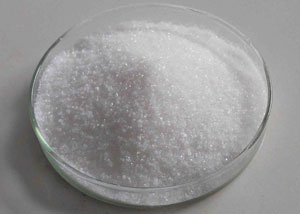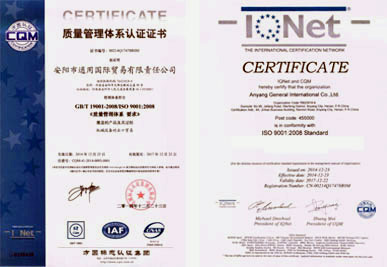L-Leucine (CAS 61-90-5) production methods and main uses
 Anyang General Chemical Co., Ltd. is the manufacturer and wholesaler of some amino acids, including CAS 72-18-4, L-Valine; CAS 61-90-5, L-Leucine; CAS 73-32-5, L-Isoleucine; CAS 56-85-9, L-Glutamine; CAS 13734-34-4, BOC-L-phenylalanine; CAS 372-75-8, L(+)-Citrulline; CAS 70-26-8, L-Ornithine; CAS 328-50-7, 2-Ketoglutaric acid. If you want to buy one of the amino acids, please contact us. Next, we mainly introduce the production methods and main uses of L-leucine (CAS 61-90-5).
Anyang General Chemical Co., Ltd. is the manufacturer and wholesaler of some amino acids, including CAS 72-18-4, L-Valine; CAS 61-90-5, L-Leucine; CAS 73-32-5, L-Isoleucine; CAS 56-85-9, L-Glutamine; CAS 13734-34-4, BOC-L-phenylalanine; CAS 372-75-8, L(+)-Citrulline; CAS 70-26-8, L-Ornithine; CAS 328-50-7, 2-Ketoglutaric acid. If you want to buy one of the amino acids, please contact us. Next, we mainly introduce the production methods and main uses of L-leucine (CAS 61-90-5).
What are the production methods of L-Leucine, CAS 61-90-5?
The production of amino acids began with hydrolysis of proteins in 1820. The extraction sequence is L-cystine, L-histidine, L-leucine, L-arginine. In 1908, sodium glutamate was found to be a strong flavor enhancer and the history of industrial production of amino acids has begun. In 1957, the use of microorganisms to produce glutamic acid fermentation has opened a new chapter in the production of amino acids by microbial fermentation. Around 1960s, L-leucine biosynthesis and its metabolic regulation mechanism were elucidated. This provides a theoretical basis for directional breeding of L-leucine produced by microbial fermentation and enzyme production of L-leucine.
The production methods of L-leucine include extraction, chemical synthesis, enzyme catalysis, microbial fermentation and so on.
- Extraction method (proteolysis). The basic element of a protein is amino acid. Under the acid condition, the hydrolysis of protein with high L-leucine content gets a mixture of all kinds of amino acids. L-leucine product can be obtained by separation, purification, delicacy and other processes.
- Chemical synthesis. There are many methods for the chemical synthesis of L-leucine. Although the principle of chemical synthesis is simple, the price is low, but the operation is complex, the reaction conditions are harsh, the products are more, the yield is not high, and some methods involve toxic substances. Leucine produced by chemical synthesis is racemic DL-leucine. In order to obtain L-leucine, the separation of optical isomers must be carried out.
- Enzyme catalysis. The advantage of enzymatic production of amino acids is that it has strong conversion ability and can avoid feedback inhibition and feedback repression in metabolic regulation, and its bioreactor is compact, product composition is relatively single and easy to process after processing, which can improve product quality and reduce cost. However, enzymes used in enzymatic production need to be fermented and refined by microorganism. The process is complex and cost is high, so it has not been widely used at present.
- Natural products exist in the spleen, heart and so on, and exist in various animal and plant tissues in the form of protein. After the decomposition, it can be dissociated. If the enzyme with high enzyme activity can be obtained at low cost, enzyme production of L-leucine is an economically feasible process.
Production process of L-leucine (CAS 61-90-5)
Main uses of L-leucine, CAS 61-90-5
- L-leucine is an essential amino acid, adult men need the amount of 2.2 g/d, L-leucine is essential for normal infant growth and maintaining normal nitrogen balance in adults.
- As a nutritional supplement, it is commonly used in bread and flour products.
- It can be used to prepare amino acid infusion and comprehensive amino acid preparation, hypoglycemic agent, plant growth promoter.
- As an amino acid infusion and comprehensive amino acid preparation, it is used for the diagnosis and treatment of idiopathic hyperglycemia in children. It is also suitable for liver disorders, anemia, poisoning, muscular atrophy, poliomyelitis sequelae, neuritis and mental disorders.
- It can be used as a spice to improve the flavor of the food. It accounts for 6.4% of the total protein quality in food. It can be used safely for food.


